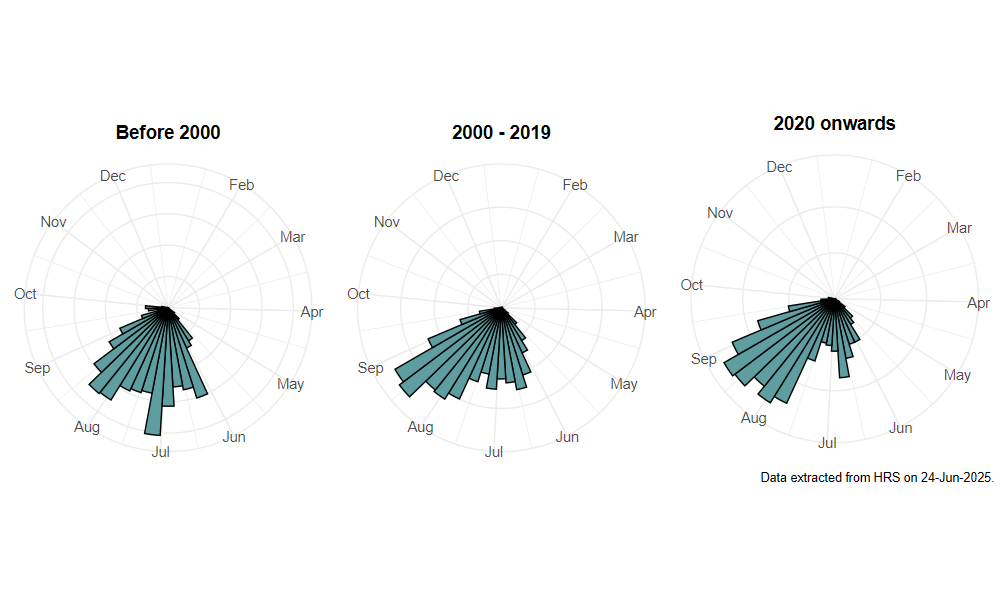Platycheirus granditarsus (Forster, 1771)
Identification
Identification difficulty = 1. ![]()
![]() according to Ball & Morris, 20241
according to Ball & Morris, 20241
Synonymy
Pyrophaena granditarsa (Forster, 1771) om Stubbs & Falk (1983)2.
Biology
Larva undescribed. Pupae have been found in wetland flood litter. It occurs in wet meadows and in the lush vegetation fringing marshes, pond, lakes, etc including more acid habitats such as poor-fen and Purple Moorgrass Molinia caerulea grassland. Adults fly amongst stands of tall vegetation such as rushes Juncus sp. and Common Reed Phragmites australis and frequently settle on the stems. They visit a wide range of flowers, especially buttercups Ranunculus sp., and males can be found hovering over open areas such as paths.
Flight period
The following plots show the number of unique records per week excluding those reported to be of immature stages.

Distribution
Widespread and common but seemingly much less regularly encountered in eastern England, especially in Lincolnshire and the east Midlands.

Trends
The following plots show the Frescalo TFactor vs year and a map of the rescaled frequency (all records) for the species.